This Avocado Salsa is the best! It’s fresh and tasty, with crunchy veggies and creamy avocado.
Is Avocado Salsa Just Guacamole?
Not quite. Avocado Salsa is made up of uncooked diced ingredients and intended to have more of a chunky, substantial texture. Perfect with chips for dipping or atop some of your favorite Mexican dishes. Guacamole has more of a mashed texture.
Our Guacamole Recipe is a smooth and creamy dip made up by mashing up avocados with a few other ingredients.
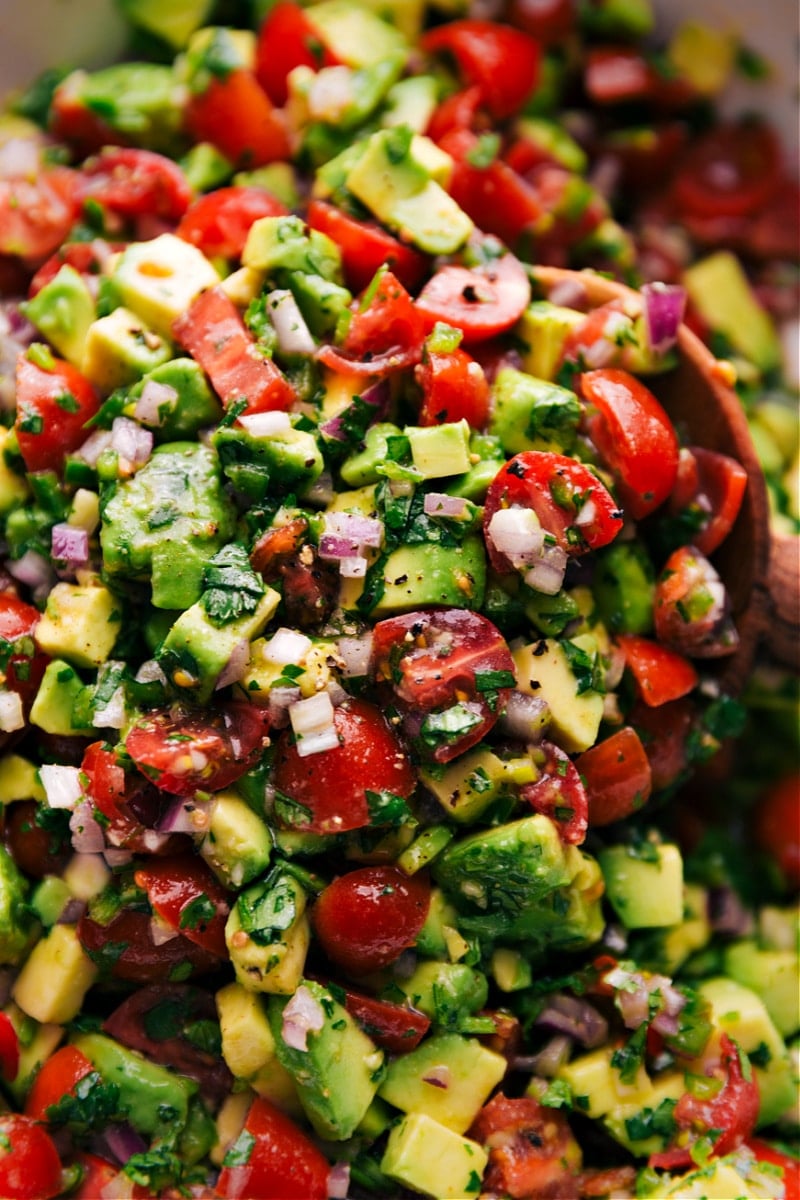
Our Favorite Chunky Avocado Salsa
It’s no secret we are avocado super fans here — I don’t think a day goes by that I don’t eat at least one! They’re packed with good-for-you fats and add a wonderful creaminess to so many dishes.
We love them in salads like this Quinoa Salad Recipe or Cucumber Feta Salad or used in a hearty breakfast like Avocado Toast. And we especially love layering them in tacos like these Shrimp Tacos or these Navajo Tacos.
And so it was time to put our love for avocados into the creation of the best Avocado Salsa recipe — and here it is!
Is Avocado Salsa Healthy?
This salsa is packed with good-for-you ingredients that are fresh and nourishing. It’s a great flavor (and nutritious) add to so many dishes.
What Is Avocado Salsa Made Of?
We combine avocados, tomatoes, red onions, cilantro, jalapeños, garlic, and a few other ingredients to deliver a stellar salsa that will dazzle up any dish you add it to!
Below are all the ingredients in this salsa, along with some helpful notes:
- Avocados. Ripe avocados are a game changer — they deliver the best flavor and creaminess. To tell if an avocado is ripe, press gently; they should yield slightly (think: touching the tip of your nose).
- Tomatoes. Avoid unripe tomatoes– you won’t get the same robust flavor. Look for the ripest, reddest tomatoes, and in the winter, use cherry tomatoes (which have the most consistent flavor year-round).
- Red Onion. If you are sensitive to onions, dice them and soak them in a bowl of cold water for 5 minutes before draining and adding to the salsa.
- Cilantro. If you aren’t a cilantro fan, replace with flat-leaf Italian parsley and add in some lime zest.
- Jalapeños. Use plastic gloves (or even a plastic bag) to protect your hands from the oils which can burn your fingers/under fingernails.
- Lime juice. Juicing limes with this citrus juicer makes the recipe prep a breeze!
- Olive oil. The oil adds a nice layer of flavor and complexity to the Avocado Salsa.
- Garlic. If you don’t have fresh garlic, add 1/2 teaspoon garlic powder.
- Salt, pepper, and ground cumin. No recipe is complete without salt and pepper, and this salsa is no exception. Add to taste preference, remembering that an extra pinch can be the difference between a good and a stellar avocado salsa!
How To Make Avocado Salsa
This recipe requires some time to chop everything up, but overall it’s very simple to make!
Here are my top tips:
- Aim to cut ingredients into similar sizes for uniformity and the best texture.
- What size? The finer the chop, the better — more flavor in every bite!
- Let the avocado salsa rest and chill. Allow time for the flavors to meld together and marinate — you’ll be rewarded with more flavor. About 10-15 minutes will do the trick!
- That said, we don’t want it resting too long– otherwise, the avocado will begin to brown and take on an odd texture. This salsa is best enjoyed the same day it is made.
Variations
Please keep in mind that tomatoes are a fruit so keeping quantities the same, you can replace the tomatoes with a different fruit — think pineapple, mango, peaches, etc. (or try this Mango Avocado Salsa)
How To Serve Avocado Salsa
This chunky Avocado Salsa Recipe is the best with a bag of chips or served with any and all of your favorite Mexican dishes.
We especially love this salsa added on top of some grilled protein (like chicken, steak, salmon, etc.). This Grilled Chicken with Avocado Salsa is one of our favorite summer recipes!
Here are some of our favorite recipes to top with this salsa:
- On top of some Loaded Taco Fries or Totchos (or Nachos)
- As a topping for this Cafe Rio Sweet Pork Recipe
- With blackened or fried fish. We love a scoop of this salsa on a flaky white fish!
- With eggs. Fried, scrambled, over easy — all great with some avocado salsa.
- This is the perfect avocado salsa recipe for tacos: add to these Beef Tacos, Baked Chicken Tacos, or Pinto Bean Tacos
Quick Tip
Do you eat avocado salsa hot or cold?
This salsa is best with chilled ingredients! I like to pop all the ingredients into the fridge a few hours before preparing so they’re nice and cold.
More Avocado Recipes:
- Black Bean Corn Avocado Salad with a chili-lime vinaigrette
- Turkey Avocado Ranch Club Wraps with bacon
- Sweet Potato Black Bean Burger with an avocado topping
- Peach Salad with a balsamic vinaigrette
- Cuban Mojo Chicken with a citrus avocado salsa
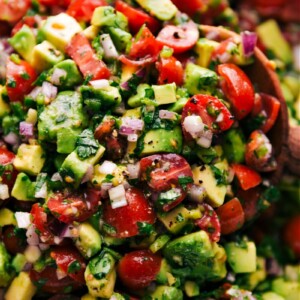
Avocado Salsa
Equipment
- Zester or fine grater
Ingredients
- 3 large ripe avocados see note 1
- 2 cups cherry tomatoes quarted, see note 2
- 3/4 cup finely diced red onion see note 3
- 1/2 cup finely chopped fresh cilantro
- 1/4 cup seeded and minced jalapeño peppers see note 4
- 3 limes
- 3 tablespoons olive oil
- 1 teaspoon minced garlic 1 clove, optional
- 1/2 teaspoon ground cumin
- 1/2 teaspoon salt
- 1/2 teaspoon pepper
Instructions
- Dice red onion (soak in water if desired, see note 3), quarter cherry tomatoes, chop cilantro, dice jalapeños, and dice avocados. Zest lime with a zester (or fine grater) to get 1 teaspoon zest. Juice limes to get 3 tablespoons lime juice. Aim to cut ingredients into similar sizes for uniformity and the best texture. The finer the chop, the better—more flavor in every bite!
- In a large bowl, mix all prepped ingredients, oil, garlic, salt, pepper, and cumin.
- Gently toss (to avoid mushing avocados), taste, and adjust salt, pepper, and lime juice as needed (flavors should sing!). Chill in the fridge for 10–15 minutes before serving. If enjoying with chips, try testing with chips to determine if the salsa doesn’t need as much salt.
Recipe Notes
Nutrition
Nutrition information is automatically calculated, so should only be used as an approximation.
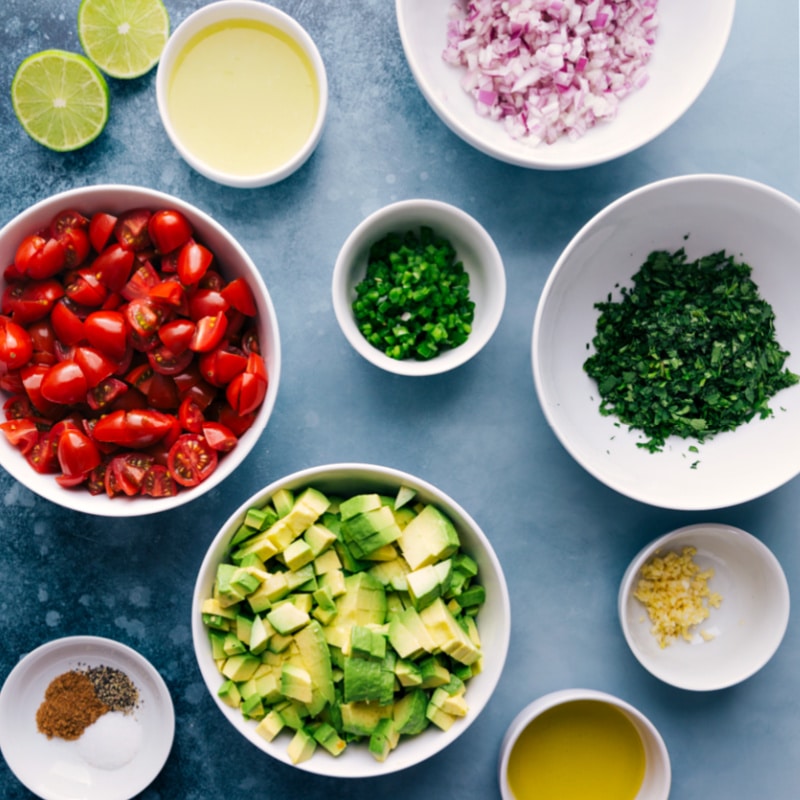
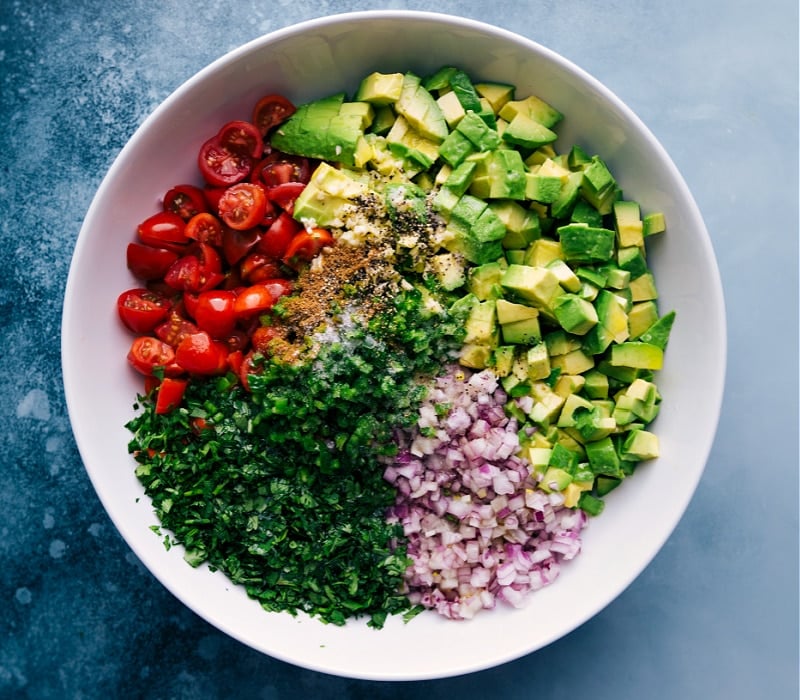
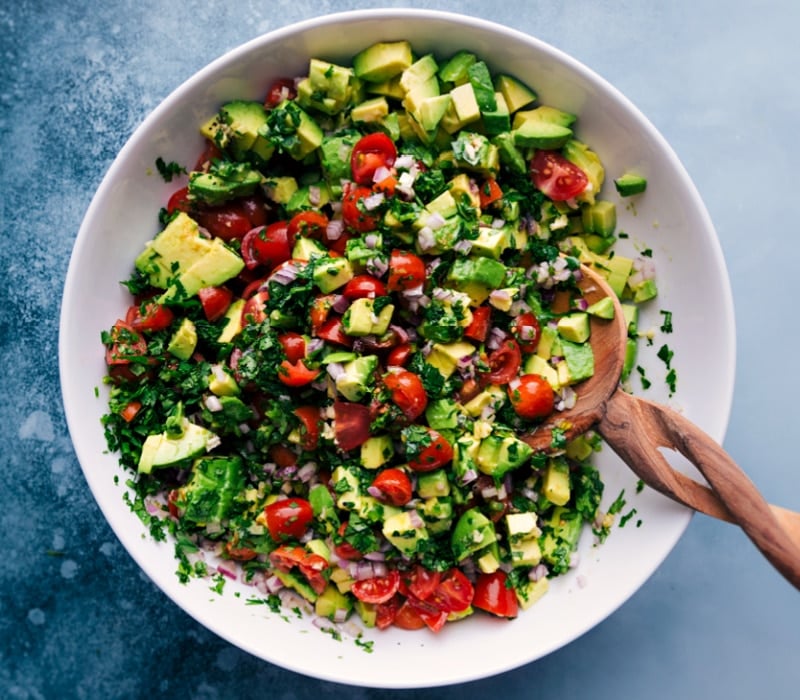
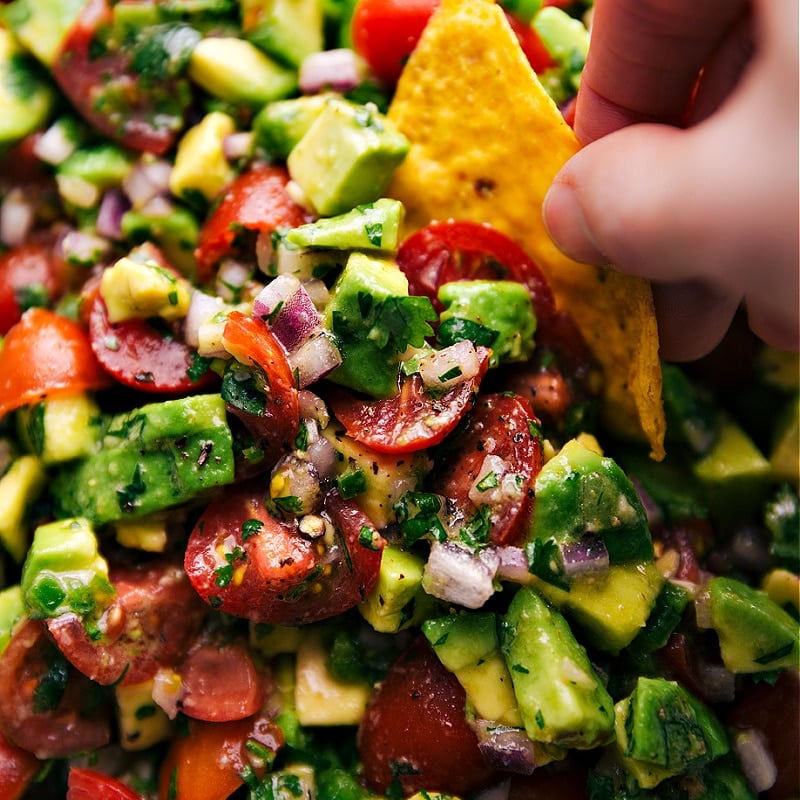


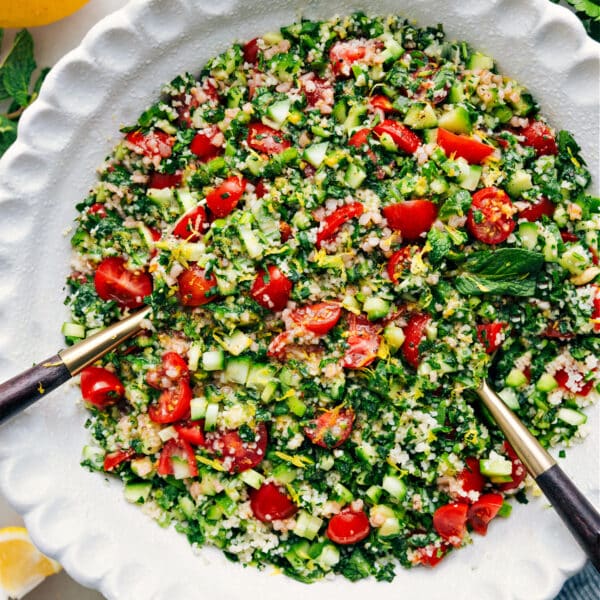
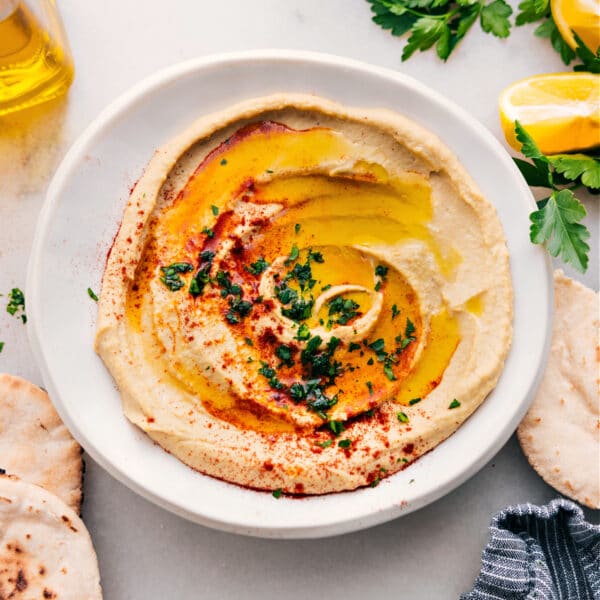
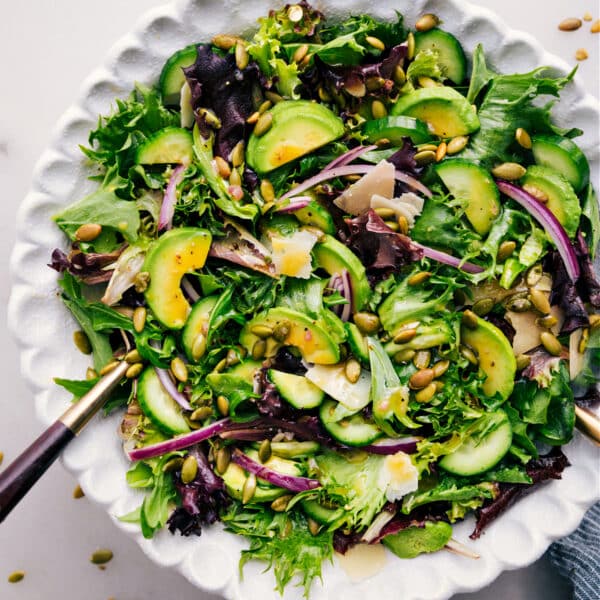
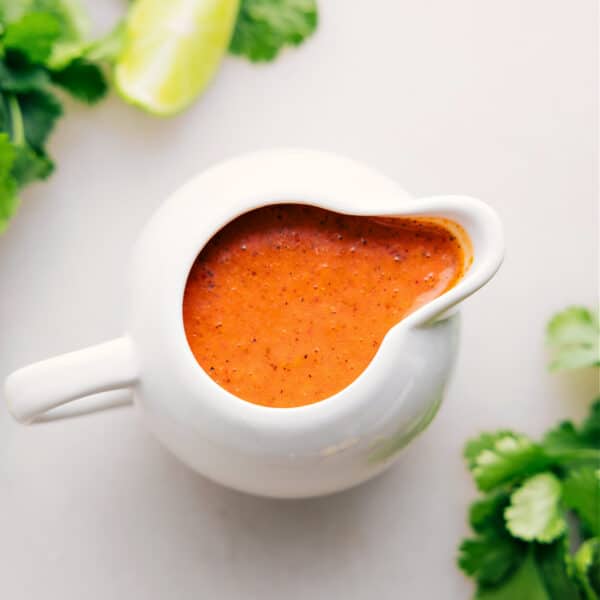









As Chelsea’s employee, I have made this salsa and it is always a hit! So easy to throw together, and so delicious!